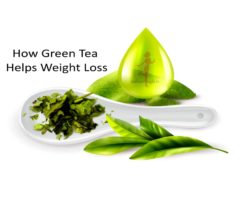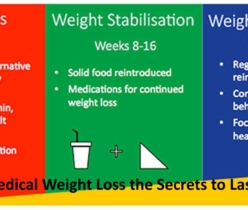Losing weight from the comfort of your home can be both convenient and effective. With the right exercises, you can burn fat, build muscle, and boost your metabolism without the need for a gym membership. From high-energy cardio workouts to strength training and yoga, there are a variety of home exercises that can help you achieve your weight loss goals. Here are some key takeaways from the article ‘Home Exercises for Weight Loss,’ which outlines the best practices and exercises for shedding pounds at home.
Key Takeaways
- Cardiovascular exercises such as running, cycling, swimming, and jump rope are fundamental for effective fat-burning and can be easily adapted for home workouts.
- Interval training, including High-Intensity Interval Training (HIIT) and Tabata workouts, maximizes weight loss by boosting metabolism and increasing calorie burn post-exercise.
- Aerobic classes like Zumba and step aerobics offer a fun and engaging way to burn calories and improve cardiovascular health and can be followed along at home through online platforms.
- Strength training with weights or bodyweight exercises not only builds muscle but also helps to increase resting metabolic rate, leading to more calories burned at rest.
- Incorporating yoga into your routine can aid in weight management by enhancing flexibility, strength, and overall body awareness, contributing to a more holistic approach to health and fitness.
Cardiovascular Exercises for Effective Fat Burning

Running and Jogging: High-Impact Calorie Crushers
Running and jogging are quintessential cardiovascular exercises that stand out as high-impact calorie crushers. These dynamic activities are not only effective in burning a significant number of calories but also in improving overall cardiovascular health.
Engaging in a regular running or jogging routine can lead to substantial weight loss, especially when combined with a balanced diet. Here’s a simple guide to get started:
- Start with a warm-up: A 5-10 minute brisk walk to prepare your muscles.
- Set a steady pace: Begin at a pace that allows you to maintain a conversation.
- Gradually increase intensity: Add short bursts of speed or hill runs to challenge yourself.
- Cool down: End with a 5-minute walk and stretching to prevent injury.
Consistency is key in seeing results from running and jogging. Aim to incorporate these exercises into your weekly routine, gradually increasing the duration and intensity as your fitness improves.
Remember, the impact on joints from running and jogging means they may not be suitable for everyone. Low-impact alternatives like cycling or swimming can be equally effective for weight loss and are gentler on the body.
Cycling: Pedal Your Way to Weight Loss
Cycling stands out as a highly effective cardiovascular exercise that not only aids in weight loss but also improves overall fitness. It’s a low-impact activity that can be enjoyed outdoors or on a stationary bike, making it accessible for individuals of all fitness levels.
Cycling is not just about burning calories; it also strengthens the leg muscles, boosts endurance, and can be a stress-relieving activity.
Here are some tips to maximize your cycling for weight loss:
- Start with moderate sessions and gradually increase your duration and intensity.
- Incorporate interval training by alternating between high-speed cycling and a comfortable pace.
- Ensure proper hydration and nutrition to fuel your workouts and aid recovery.
- Track your progress to stay motivated and adjust your training as needed.
Swimming: Dive into a Full-Body Workout
Swimming is not only a refreshing way to cool down on a hot day, but it’s also an excellent exercise for weight loss. The answer is a resounding yes when it comes to the effectiveness of swimming in burning calories and providing a full-body workout. Unlike other forms of exercise, swimming engages multiple muscle groups simultaneously, ensuring a balanced and comprehensive workout experience.
Swimming’s low-impact nature makes it a suitable exercise for individuals of all fitness levels, including those with joint concerns or injuries. It’s gentle on the body while still offering the resistance necessary to build strength and endurance.
To maximize weight loss through swimming, consider incorporating the following routine into your exercise regimen:
- Start with a warm-up of light swimming for 5-10 minutes.
- Alternate between different strokes (freestyle, breaststroke, backstroke, butterfly) to engage various muscle groups.
- Include sprint intervals, swimming as fast as you can for 30 seconds, followed by a 60-second moderate pace.
- Cool down with a slow swim or gentle floating for 5-10 minutes.
Jump Rope: Skip Your Way to a Slimmer Physique
Jumping rope is a surprisingly effective exercise for weight loss, providing both cardiovascular benefits and muscle toning. It’s a high-intensity workout that can burn more calories per minute than many other exercises.
Jumping rope is not only a fun activity from our childhoods but also a fantastic way to engage multiple muscle groups, improve coordination, and increase stamina.
Here’s a simple routine to get started:
- Start with a 5-minute warm-up at a moderate pace.
- Proceed with 1 minute of intense jumping, followed by a 1-minute rest.
- Repeat the intense jumping and rest cycle for 10-15 minutes.
- Cool down with a 5-minute gentle jump at a slow pace.
This routine can be adjusted based on your fitness level and goals. Consistency is key, so aim to include jump rope sessions in your workout regimen several times a week for the best results.
Interval Training: Maximizing Weight Loss

High-Intensity Interval Training (HIIT): Boost Your Metabolism
High-intensity interval Training (HIIT) is a transformative approach to fitness that alternates between intense bursts of activity and fixed periods of less intense activity or complete rest. This method is not only time-efficient but also proven to boost metabolism and enhance fat burning, even after your workout is complete.
The structure of a HIIT session can vary, but a common format includes exercises such as sprints on a treadmill, cycling at maximum effort, or rowing at a vigorous pace, followed by brief recovery intervals. Here’s a basic outline of a HIIT workout:
- Warm up for 5 minutes
- 30 seconds of high-intensity exercise
- 1 minute of rest or low-intensity exercise
- Repeat for 15-20 minutes
- Cool down for 5 minutes
Embrace the challenge of HIIT to experience a significant impact on your fitness journey. With consistent practice, you’ll notice improvements in your endurance, strength, and overall body composition.
Tabata Workouts: Quick and Intense Fat Burning
Tabata workouts are a specialized form of high-intensity interval training designed to provide a quick and intense fat-burning experience. Originating in Japan, Tabata involves 20 seconds of all-out effort followed by 10 seconds of rest. This cycle is repeated for four minutes, making it a compact workout for weight loss that fits easily into a busy schedule.
Tabata’s structure makes it an efficient choice for those looking to improve cardiovascular health while also targeting fat loss. The short, sharp bursts of activity can lead to significant calorie burn both during and after the workout, thanks to the elevated post-exercise metabolism.
To get started with Tabata, consider the following sequence:
- Warm up with light cardio (e.g., jogging, jumping rope) for a few minutes.
- Perform an exercise (like burpees or air squats) at maximum intensity for 20 seconds.
- Rest for 10 seconds.
- Repeat the exercise and rest cycle for a total of eight rounds.
Consistency is key with Tabata workouts. Regular sessions can help build lean muscle mass and enhance metabolic rate, contributing to more effective weight management.
Aerobic Classes: Dance and Move to Shed Pounds

Zumba: Groove to a Leaner You
Zumba is a vibrant and energetic fitness program that combines Latin and international music with dance moves. This aerobic exercise is not only fun but also effective in burning calories and improving overall fitness. Participants often find themselves getting a full-body workout while immersed in the rhythm of the music, which makes Zumba an enjoyable way to achieve weight loss goals.
In a typical Zumba session, you can expect a variety of dance styles, including salsa, reggaeton, and merengue, which help to build endurance and improve cardiovascular fitness. The classes are designed to be welcoming for all fitness levels, allowing everyone to participate at their own pace.
Zumba’s dynamic approach to fitness ensures that each session feels like a party rather than a workout, making it a sustainable and motivating way to stay fit and manage weight.
With regular participation, Zumba can lead to improved blood pressure and a noticeable increase in energy levels. It’s a social workout that encourages community and support among participants, adding an extra layer of enjoyment to the weight loss journey.
Step Aerobics: Step Up Your Weight Loss Game
Step aerobics is a dynamic fitness activity that combines rhythmic stepping with music to create an engaging and effective workout. This form of exercise is not only fun but also a powerful tool for weight loss. It targets multiple muscle groups, enhances coordination, and can be adjusted to various fitness levels.
In a typical step aerobics session, you’ll perform a series of choreographed movements on and off a raised platform. Here’s a simple breakdown of what a session might include:
- Warm up to prepare your body and increase your heart rate
- Main routine with steps of varying intensity and complexity
- Cool-down with stretches to prevent muscle soreness
Step aerobics can help you reach your fat burning zone as these are a great way to lose weight, and also improve lung capacity, and increase heart rate. It’s an excellent choice for those looking to add variety to their fitness regimen while effectively burning calories.
Strength Training: Build Muscle to Incinerate Fat

Weightlifting: Elevate Your Resting Metabolic Rate
Engaging in weightlifting is not just about enhancing physical appearance; it’s a potent method for Building Muscle and elevating your resting metabolic rate. This means that even when you’re not actively working out, your body continues to burn calories more efficiently.
By incorporating a mix of free weights and resistance machines into your routine, you can target various muscle groups, leading to comprehensive strength gains and improved metabolic function.
Here’s a simple structure to get started with weightlifting for weight loss:
- Free Weights: Utilize dumbbells and barbells for exercises like squats, deadlifts, lunges, and bench presses.
- Resistance Machines: Focus on specific muscle groups with controlled resistance training.
- Bodyweight Exercises: Complement weightlifting with push-ups, pull-ups, dips, and bodyweight squats.
It’s crucial to allow your muscles adequate recovery time. Aim for 2-4 weightlifting sessions per week, ensuring you have at least 48 hours of rest between workouts targeting the same muscle groups. This approach helps maximize muscle building and fat burning without overtraining.
Bodyweight Exercises: No Equipment, No Excuses
Bodyweight exercises are a cornerstone of home exercises for weight loss, offering the flexibility to train anywhere without the need for equipment. These exercises can be as effective as any gym workout, targeting multiple muscle groups and improving overall fitness. For beginners, a simple 20-minute routine can set the foundation for a solid fitness journey.
The beauty of bodyweight training lies in its simplicity and adaptability. It can be tailored to any fitness level, making it an ideal starting point for those new to exercise.
Here’s a beginner-friendly bodyweight workout that can be done in the comfort of your home:
- 20 Bodyweight squats
- 10 Push-ups
- 10 Walking lunges (each leg)
- 10 Dumbbell rows (using a milk jug or other weight)
- 15 Second Plank
- 30 Jumping jacks
This routine is not only convenient but also comprehensive, engaging various muscle groups to maximize fat burning and muscle building.
Yoga: Flexibility and Strength for Weight Management

Vinyasa Flow: Yoga for Dynamic Weight Loss
Vinyasa Yoga is a dynamic and active form of yoga that effectively combines movement with breath. This practice is not only beneficial for flexibility and strength but also plays a significant role in weight management. The continuous flow of postures in Vinyasa Yoga can help improve metabolism, which is crucial for burning calories and losing weight.
Vinyasa Yoga’s rhythmic movements, synchronized with deep and mindful breathing, create a meditative state that can reduce stress levels. Lower stress is associated with decreased cortisol production, a hormone that, when elevated, can lead to weight gain.
Here are some key benefits of Vinyasa Yoga for weight loss:
- Enhances cardiovascular fitness
- Builds muscle strength
- Increases endurance
- Promotes better sleep
By incorporating Vinyasa Yoga into your routine, you can enjoy a holistic approach to weight loss that nurtures both the body and mind.
Power Yoga: Intensify Your Practice for Better Results
Power Yoga is a vigorous form of yoga that goes beyond flexibility and relaxation, focusing on building strength and endurance. It’s a dynamic practice that can serve as a significant calorie burner, making it an excellent choice for those looking to manage their weight.
Incorporating Power Yoga into your routine can lead to a reduction in belly fat, as it combines the benefits of muscle toning with cardiovascular exercise. This dual approach not only helps in burning calories but also in building lean muscle mass, which can increase your resting metabolic rate.
Here are some tips to get the most out of your Power Yoga sessions:
- Start with a warm-up to prepare your body for the intense practice.
- Focus on your breath; synchronize your movements with your inhalations and exhalations.
- Include a variety of poses that challenge different muscle groups.
- Aim for consistency; practice Power Yoga several times a week.
- Cool down with stretches to prevent muscle soreness and enhance flexibility.
Power Yoga is not just about physical postures; it’s a holistic approach to health that can improve your mental focus and reduce stress, contributing to overall well-being and weight management.
Remember to listen to your body and modify poses as needed. With regular practice, you’ll notice improvements in strength, flexibility, and possibly even a decrease in body weight.
Conclusion
In conclusion, weight loss is a journey that can be effectively undertaken from the comfort of your home. With a variety of exercises ranging from cardiovascular workouts like running and cycling to strength training and interval training, there’s something for everyone. It’s important to remember that consistency is key, and incorporating a mix of different exercises can help keep your routine interesting and your body challenged. Always prioritize proper form and consider consulting with a healthcare professional before starting any new exercise regimen, especially if you have underlying health conditions. By staying dedicated and adjusting your workout plan as your fitness level improves, you can achieve your weight loss goals and enhance your overall health and well-being.
Frequently Asked Questions
Can I lose weight by doing home exercises?
Yes, you can lose weight by performing home exercises such as cardiovascular workouts, interval training, aerobic classes, strength training, and yoga, which can all contribute to weight loss and improved fitness.
How often should I exercise for weight loss?
For weight loss, it’s generally recommended to engage in at least 150 minutes of moderate-intensity or 75 minutes of high-intensity exercise per week. However, the exact frequency may vary based on your fitness level and weight loss goals.
Do I need any equipment for home weight loss exercises?
Many home exercises for weight loss do not require equipment and can be done using your body weight, such as running, cycling, jump rope, and bodyweight exercises. However, some activities like weightlifting may require equipment.
Is it necessary to combine different types of exercises for weight loss?
Combining different types of exercises, such as cardio, strength training, and flexibility workouts, can provide a well-rounded fitness routine that maximizes weight loss and improves overall health.
How important is diet in conjunction with home exercises for weight loss?
Diet plays a crucial role in weight loss. Even with regular exercise, a healthy and balanced diet is essential for achieving and maintaining weight loss. It’s important to create a calorie deficit by consuming fewer calories than you burn.
Can yoga help with weight loss?
Yes, certain styles of yoga, such as Vinyasa Flow and Power Yoga, can help with weight loss by improving flexibility, strength, and muscle tone, as well as reducing stress, which can be a factor in weight gain.




